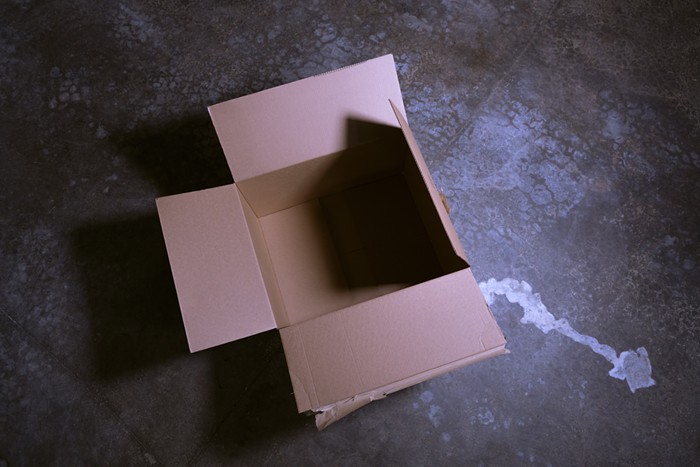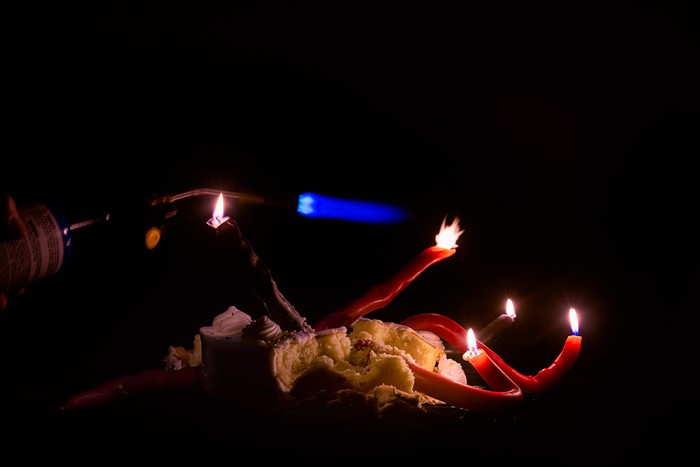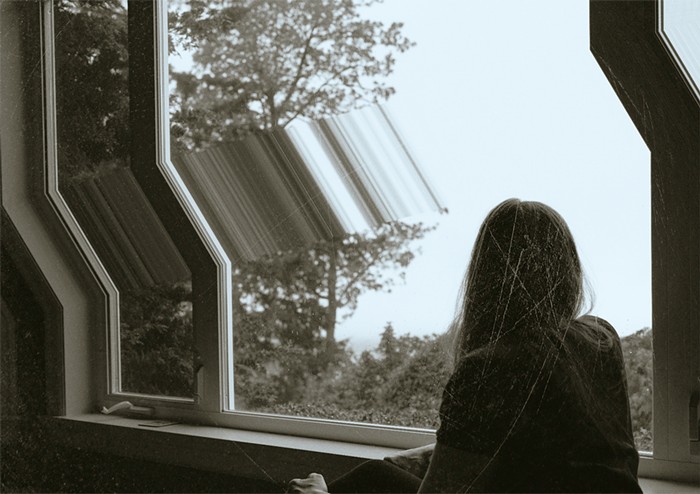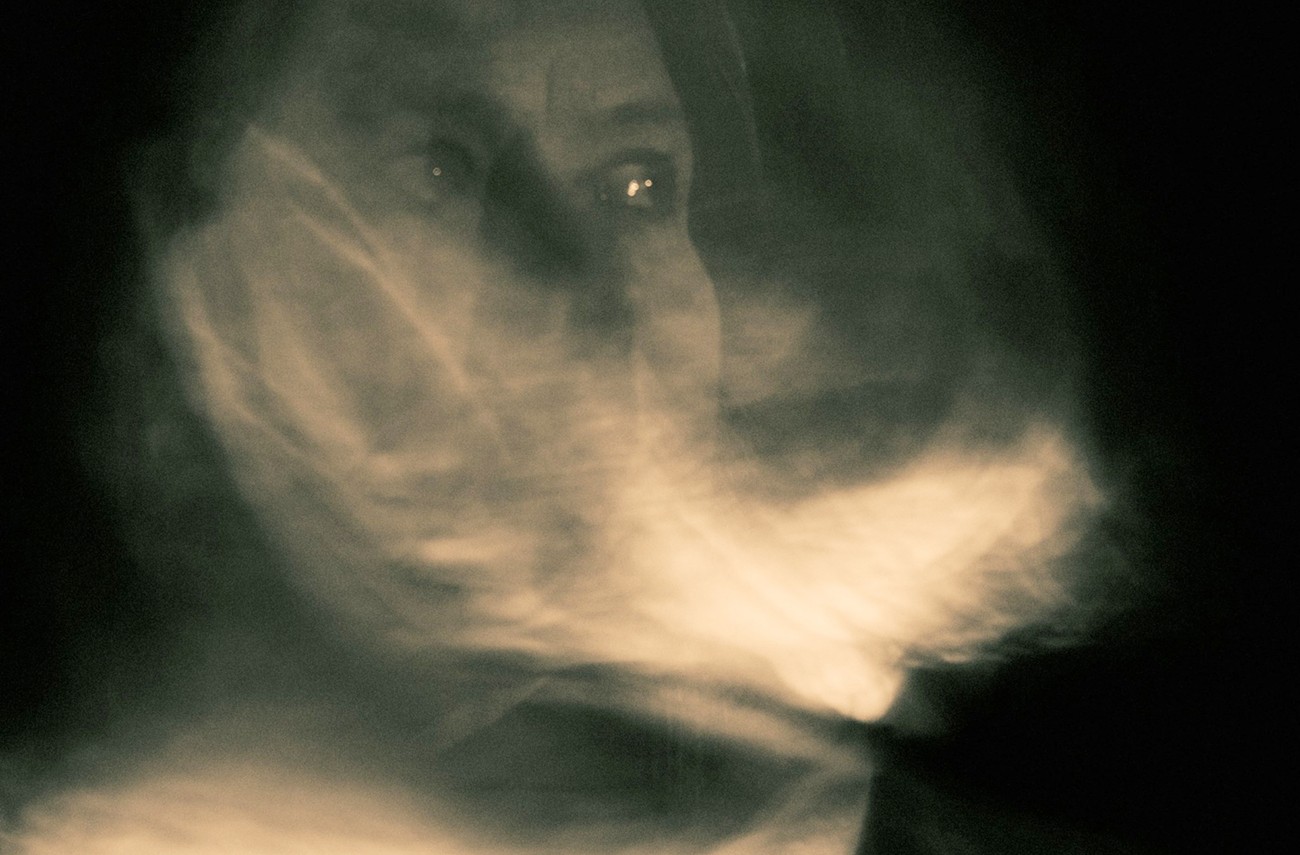Janet Politte is one of five photographers featured in this month’s Thesis Exhibition at Photographic Center Northwest, celebrating the graduates of this year’s PCNW Certificate Program. All five artists have wonderful work on display this month (and through August 11), but Politte’s caught my eye with the moody, personal and intriguing moments she captures and creates with both traditional photographic techniques and some modern, unexpected digital manipulations.
In our interview, Politte describes the way depression shapes her work, and the way her work shapes depression.
Can you elaborate on how your struggle with depression has played a role in influencing your art?
My project, “Pandora’s Box,” deals directly with the condition of clinical depression. The tale of Pandora’s Box is well-known, but what is often forgotten is that the story is not about how all the world’s evils were released into it. It is how there is one last thing at the bottom of the box: hope.
But as one man asked while standing on the rail of the Golden Gate Bridge: “What happens when you open the box and hope isn’t there?”
Depression can create an overwhelming sense of despair from which there is no escape. There is no hope for things returning to normal or of getting one’s life back at the bottom of the box. I understand it as a lens between myself and the world outside, whose color taints everything I see, whether I am looking out at the world or in towards myself. And this one lens is all I have. I don’t know what the world looks like without it, and I have no frame of reference to judge how distorted my perception might be.

You mentioned not being afraid to use Photoshop to bring an image to its full potential. Do you find that to be a controversial viewpoint?
Photoshop is just another tool that photographers use to create images. But there is pushback from some quarters against its use, whose arguments are valid in some cases. For instance, documentary photography, which intends to record an event or a place in a particular moment in time, should be minimally processed with adjustments to exposure. To manipulate it in a way that in effect changes history, such as removing people from images in historical photographs, is not acceptable.
However, I think part of the problem is that photography has been viewed as showing things just as they happened with no bias from anyone, including the photographer. Every photograph is shaped by the inherent experience and bias of the one who takes it. Decisions must be made, such as whether the image is to be black and white, whether to use natural light or artificial light, or what perspective to use to capture the scene. All these things and many, many more variables change the way the image is perceived and the message that it imparts.
The question becomes: How much manipulation is acceptable? I think that depends on the intention of the photographer. If the goal is to give the viewer some insight about how the photographer feels, then whatever tools it takes to bring that idea to life should be encouraged. Some photographers, like Jeff Wall, create intricate movie-like sets with actors and complicated lighting setups to bring their idea to life. Other photographers use compositing to bring different elements from multiple images to create one final image. One is not better than the other, but a different approach to create an image that communicates an idea or tells a story.

Your piece, “Crushed,” is delightful and a little perplexing. How did you create it, the effect of someone in crumpled paper?
Thank you! The idea behind this picture is the difficulty to see beyond the façade of someone who is depressed. Depressed people often hide how they’re feeling to cope with day-to-day life, presenting a composed exterior to hide their pain. But the effort needed to keep up this masquerade can be grueling.
“Crushed” is a composite, using two images layered one upon the other. I began with a portrait of my daughter and added an image of a piece of crumpled paper in another layer on top in Photoshop, covering most of her body.
Very cool. Can you explain Data Bending and how you employed that technique with “Pandora’s Box”?
Data Bending is a process that manipulates the data of the digital image file using software that was not designed for photographs, creating a glitching effect. This is achieved using a hex editor, or audio software such as Audacity, which is what I used for this image. This process produces unpredictable results that are difficult to be intentional about, so my process is to play with the sliders in Audacity, creating many iterations of the same image. When I generate one that has some interesting details, I combine it and the original image in Photoshop and blend the two together.
I used this technique for my photograph, “Looking Out,” a self-portrait of myself staring out a window at a blank gray sky. I wanted to disrupt the image and create tension as my perception of the serene, cloudy atmosphere is literally warped by an inside turmoil.

Was PCNW your first formal photography education? What was your experience like?
Yes, PCNW was my first formal photography education. Before I started there, I used the internet and books on photography as my classroom. My intention when I first began was to take a few classes at PCNW on subjects that interested me, and then move on to work on my own. That was five years ago.
What kept me there and eventually led me to enter the certificate program was the supportive, creative community they had built around a rigorous photography program. The structure and accountability of the classes was an impetus for growth, as well as acquiring and refining my skills.
My experience at PCNW has been overwhelmingly positive. The feedback from instructors and other students was invaluable, as was exposure to the many different outlooks, methodologies, and ways of working that expanded my understanding of the possibilities for my photography practice.
The PCNW 2022 Thesis Exhibition runs June 25 thru August 11. A student panel conversation kicks off Thursday, July 28 at 6 pm.


















